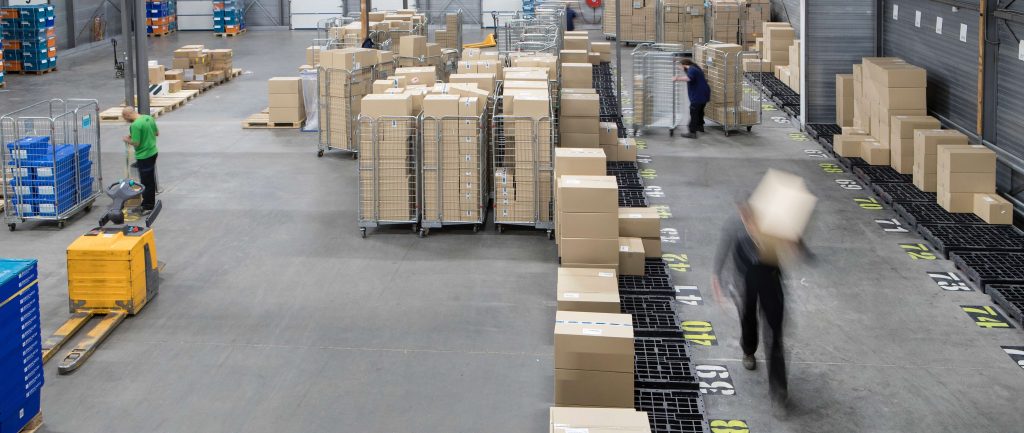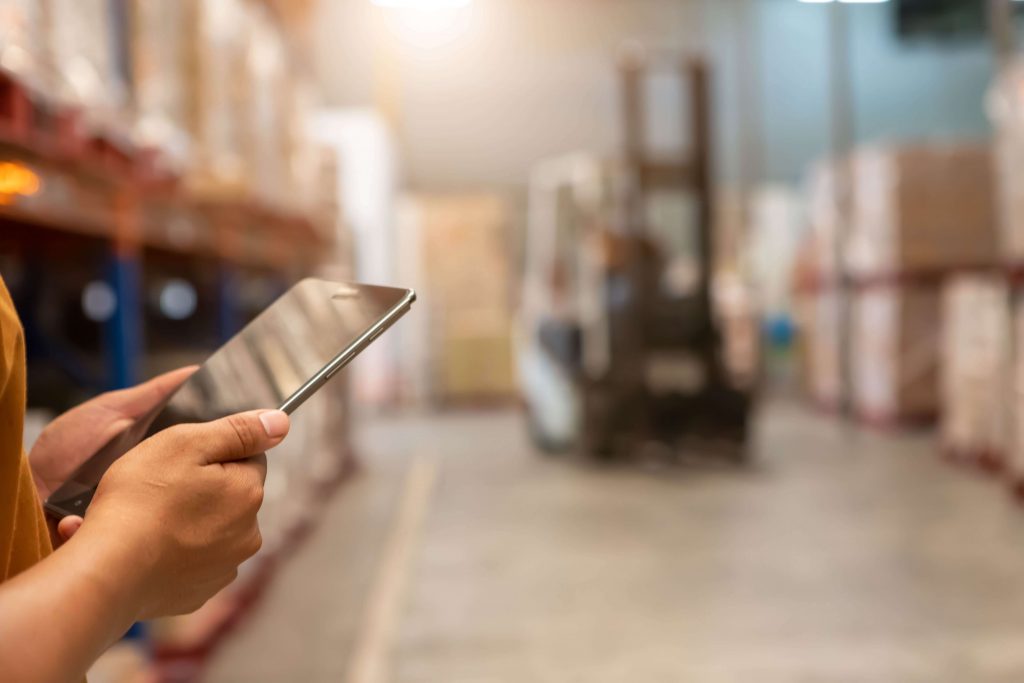
Top Trend-shaping Technologies in Logistics
Logistics is a billion-dollar industry that stands to benefit most from tech trends. Here are some of the latest trends in the logistics industry.

Logistics is a billion-dollar industry that stands to benefit most from tech trends. Here are some of the latest trends in the logistics industry.
The logistics sector, crucial to the economy of any developing and developed country, has undergone dynamic changes in recent years, flourishing thanks to the latest developments in automation, AI, and new tracking technologies. And it will continue to grow and change even more. The market for logistics services worldwide will grow to $72 billion by 2027.
However, like any business, logistics has recently suffered several difficulties, from new regulations to shifting client requirements to the slowdown in globalization. All components of the supply chain and logistics companies have been tested by the pandemic in terms of operations, economics, and new technologies.
To withstand supply chain constraints and difficulties in the post-pandemic world, it’s critical to keep up with new trends in the logistics industry. In this article, we will show you some of the leading trend-setting innovations that will shape the future of the logistics industry.

Even while new technologies continue to have a substantial influence on the retail sector, the pandemic has significantly pushed new retail technology trends to actually catch on — also in logistics. By employing API interfaces to connect online retailers with fulfillment centers, logistics companies are implementing trends in logistics automation.
Many businesses see great potential in integrated 3PL services as e-commerce continues to grow exponentially.
Integrated 3PL services – what are they? They involve outsourcing key tasks such as customs clearance, transportation, tracking, or warehousing to a single provider that can organize and integrate them more effectively than multiple independent companies operating separately.
One of the logistics and supply chain areas that have the potential for upgrading the UX tech interface is warehousing. Although these systems are already helping reduce physical tasks, new users need to be trained quickly and effectively. Leveraging trends from UX can have a significant impact. The future of logistics lies in developing intelligent terminals with touchpads or voice control for automated storage and retrieval systems that focus on UX design.
Omni-channel fulfillment and shipping are two of the many innovations in the logistics sector. Major retailers have recently begun offering more omnichannel integrations to drive consumer commitment. The idea behind this is simple: whether shopping in person or online, the goal is to make the entire process straightforward and intuitive.
Omnichannel distribution, in its simplest form, is a mechanism that allows clients to make purchases and get orders through any medium, such as online transactions, purchases at physical locations, or in-store purchases that they need to be shipped elsewhere. An integrated customer experience can only be achieved by logistics companies that adopt this omnichannel strategy and make life easier for customers — rather than developing separate channels for shipping and fulfillment.
AI has several supply chain management applications. The use of data analytics tools and AI enables effective fleet management. It can help optimize routes based on weather or traffic conditions and improve vehicle status prediction. There are no limits to the uses of this powerful technology. Logistics and supply chains can also use AI-based apps and technologies to improve warehousing, delivery of items to warehouses, last-mile delivery, and real-time route monitoring.

By minimizing human input, warehouse automation technology, such as automated guided vehicles boosts productivity, reliability, and profits. Automated guided vehicles (AGVs) take the place of workers to solve the problems associated with efficiently handling large quantities of items. Automated storage and retrieval can also make it easier to manage material storage. One thing is for sure — warehouse automation technologies will eventually eliminate labor-intensive and time-consuming tasks.
The simplest application of the GPS vehicle tracking programs is to observe which vehicle is moving in which direction. You can also follow speed and position, the path, or even the engine control with GPS. It’s even possible to check if the vehicle is going to the designated location or if it is in standby mode. The truth is that this type of fleet management is essential for the freight forwarding and logistics industry to thrive.
Radio-frequency identification (RFID) enables automatic tracking and location. Due to the high installation costs, the retail industry started employing this technology in 1999 with a moderate frequency. The significant deployment costs notwithstanding, this technology is worthwhile. Why? Many issues affect businesses not using RFID technology, including picking blunders, transportation mishaps, theft, and more frequent errors.
Even if the Internet of Things (IoT) is just beginning to have an influence on the logistics sector, it will undoubtedly grow even more crucial. IoT facilitates the communication of asset data as well as the surveillance of distant vehicles. The transport process’s many components can also be remotely kept under control using an IoT channel. IoT in logistics increases transparency at every stage of the supply chain and boosts inventory administration. Additionally, when combined with drone tech, Internet of Things applications in logistics can guarantee streamlined procedure completion and prompt product delivery.
New last-mile delivery tech solutions are one of several trends in the logistics industry. Last-mile delivery is the final stage of shipping items from warehouses and distribution hubs to the final consumer. The last phase of the supply chain is often the most labor-intensive. It’s also full of potential disruptions. Shipments can get stuck in traffic or get delayed because of road conditions. Some types of deliveries require the customer to be there in person to collect the package. Of course, if they’re not home, that only complicates delivery. Improving last mile delivery is a crucial step in the order fulfillment process and is one key area tech solutions can help.

Smart lockers give customers options in how they collect their packages and eliminate the risk of the client being unavailable for delivery. Additionally, they lower congestion and CO2 emissions while saving gasoline costs. Unlike conventional mailboxes, smart lockers feature electronic access and security cameras. Clients select a specific locker close to their residence and are given a set window of time to pick them up. To open the locker electronically, they are sent access instructions, a QR code, or both through SMS or an app. They are becoming more and more popular across several continents. Polish firm InPost is expanding its locker network to more countries in the European Union. Danish logistics firm DSV has established 400 smart locker facilities in South Africa.
Drone delivery is not yet widespread, but it’s one trend that companies are working on. Rural areas or remote regions especially could benefit from packages being flown in. Drones could cut down on delivery time and expenses. They can also collect broken packages and bring them back to the vendor. When it comes to railroads, they might be employed to retrieve products from a train and transport them to the receiving party. A good example is the NHS in the UK that partnered with Skyport to allow two hospitals to transfer vital medical equipment by drone in the isolated Scottish Highlands, which would not have been possible by land.
The logistics sector is a large and intricate ecosystem. Every economy depends on it, and its size and importance are predicted to increase in the years to come. Leveraging the potential of new digital trends in the logistics industry is essential due to the unpredictability of factors that can disrupt the industry, such as pandemics, international wars, and fierce competition from emerging firms and startups.
 Hi, I’m Marcin, COO of Applandeo
Hi, I’m Marcin, COO of Applandeo
Are you looking for a tech partner? Searching for a new job? Or do you simply have any feedback that you'd like to share with our team? Whatever brings you to us, we'll do our best to help you. Don't hesitate and drop us a message!
Drop a message